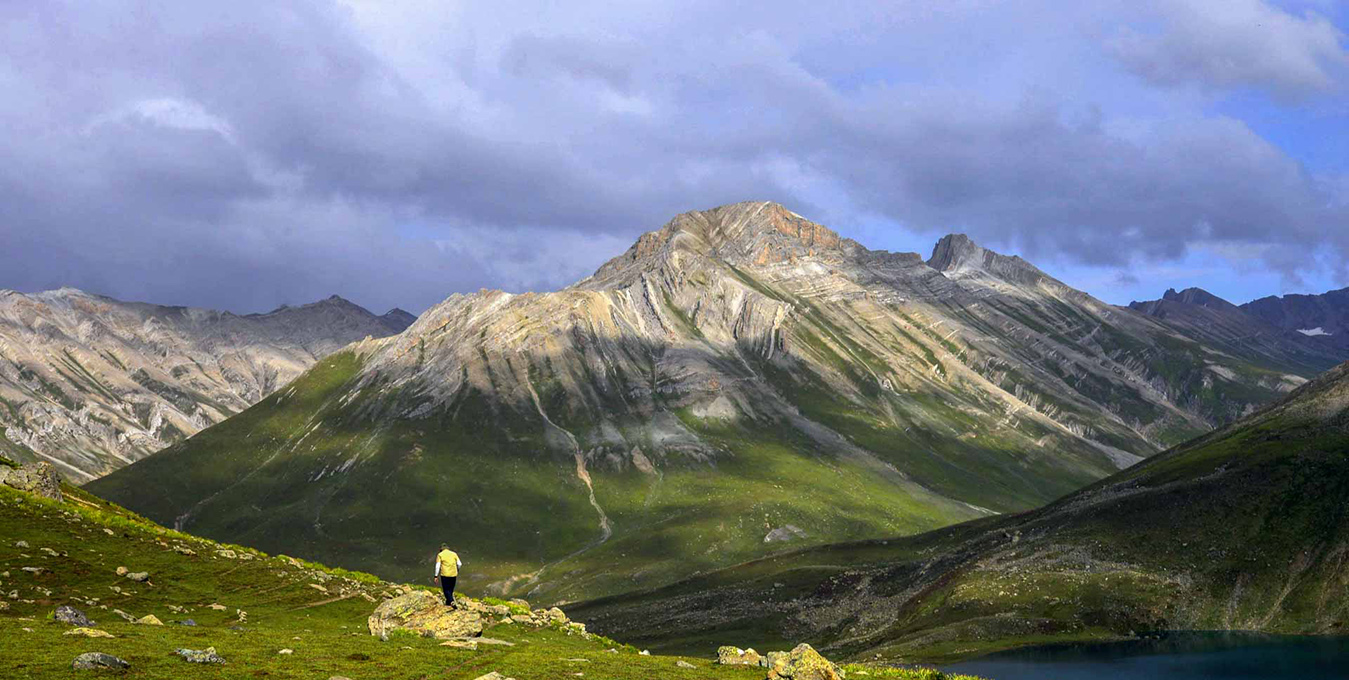
Jammu & Kashmir offers some of the most exciting Hiking destinations in world. In Indian Himalayas hiking can be done in so many states. But in Jammu and Kashmir, Ladakh and Zanaskar region are best for hiking. Ladakh in Indian Himalayas is a paradise for trekking enthusiast because it have plenty of trekking options to suit all adventurers and nature lovers. The Land of High Passes is very different from the green landscapes of other parts of the Himalayas. Here nature is at its extreme. A land of freezing winds and burning hot sunlight, Ladakh is a cold desert lying in the rain shadow of the Great Himalayas and other smaller ranges.
Do you enjoy a good walk? Then maybe you'll enjoy a good hiking experience within the mountainous regions of India too. Hiking does not require an experienced walker. You have to be fit and healthy and courageous enough to take up challenges. In India, Hiking is not just restricted to Himalayan regions, the lower altitude regions of the Western Ghats and Nilgri Hills also provide some pretty good options to enjoy a nice hike.
Ofcourse hiking involves walking, but there are certain things every hiker should keep in mind, before taking up the next hiking trip. Firstly, the clothing should be of a fabric that provides a breather to your skin and allows your body to shed excess heat and sweat while feeling dry, so avoid cotton because it retains sweat and doesn't release it to evaporate. For cold weather, look for polypropylene such as Capilene, Thermion, Thermax and Thermastat or silk undershirt. For warm weather - CoolMax, Supplex, or polyester microfiber are good choices for base covering. Upon this you could wear a shirt and pants of wool, fleece, pile, or down. A windproof and water-resistant jacket worn loosely also works as a good clothing option, which can be removed when you start feeling warmer after walking. The right hiking shoes for your feet can make all of the difference for walking comfort and an enjoyable hike tour. A hiker should also have a variety of shoes to meet different climates and surfaces. If your walks are taking up natural paths and off-beaten tracks, you may want more rugged shoes. Look for the lighter weight variety shoes for hike and those with some flexibility and are waterproof. The socks should also be made from CoolMax, polypropylene, or other woven fabric as they wick away the sweat to evaporate and help prevent blisters. Other things that a hiker has to carry include hat, waist packs, hike backpacks, water bottles, sunscreen and hike tour route maps.
One should drink water before, during, and after walking. Your comfort and stamina depends on getting enough water while walking. A hiker needs to drink every half hour if walking at a moderate pace, more often if you are sweating it. For some maybe getting lost or wandering in the middle of nowhere becomes enjoyable and exciting, but for most it's a frustrating and scary experience that's why carrying a route map always helps. No hiker should set out on a hike tour without a trail map and compass, and neither a walker should head out without having any idea about the route.